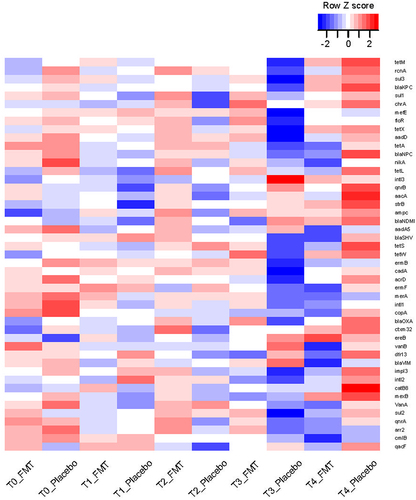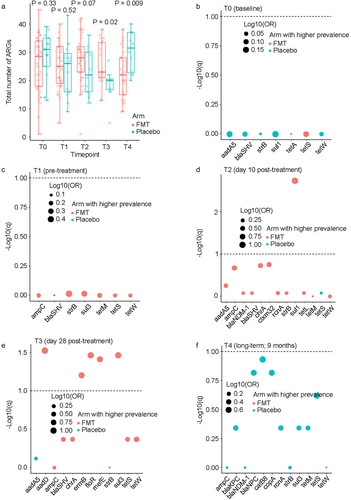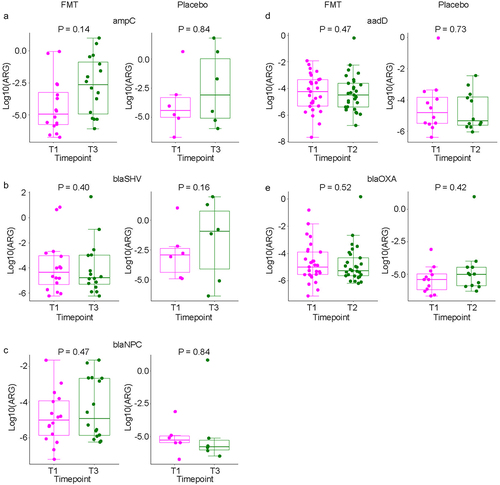Figures & data
Table 1. The ARG panel and resistance spectrum.
Figure 1. Heatmap of ARGs over time.

Figure 2. Comparison between the two arms for prevalence of each ARG at each timepoint.

Figure 3. Cross-sectional quantitative comparison between the two arms.

Figure 4. Longitudinal analysis of ARG quantitative levels comparing T1 (pre-dose 1) to subsequent timepoints.

Table 2. Mixed-effects modeling of quantitative ARG levels comparing T1 to subsequent timepoints.
